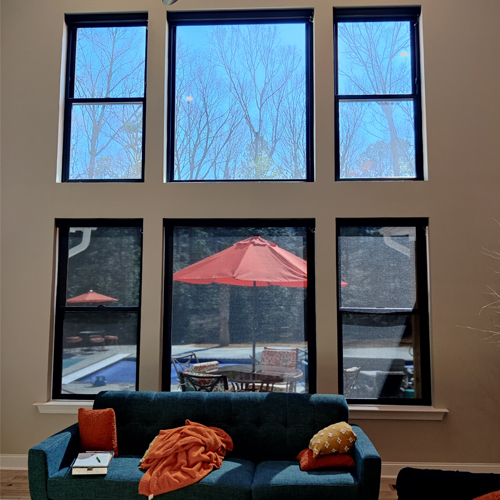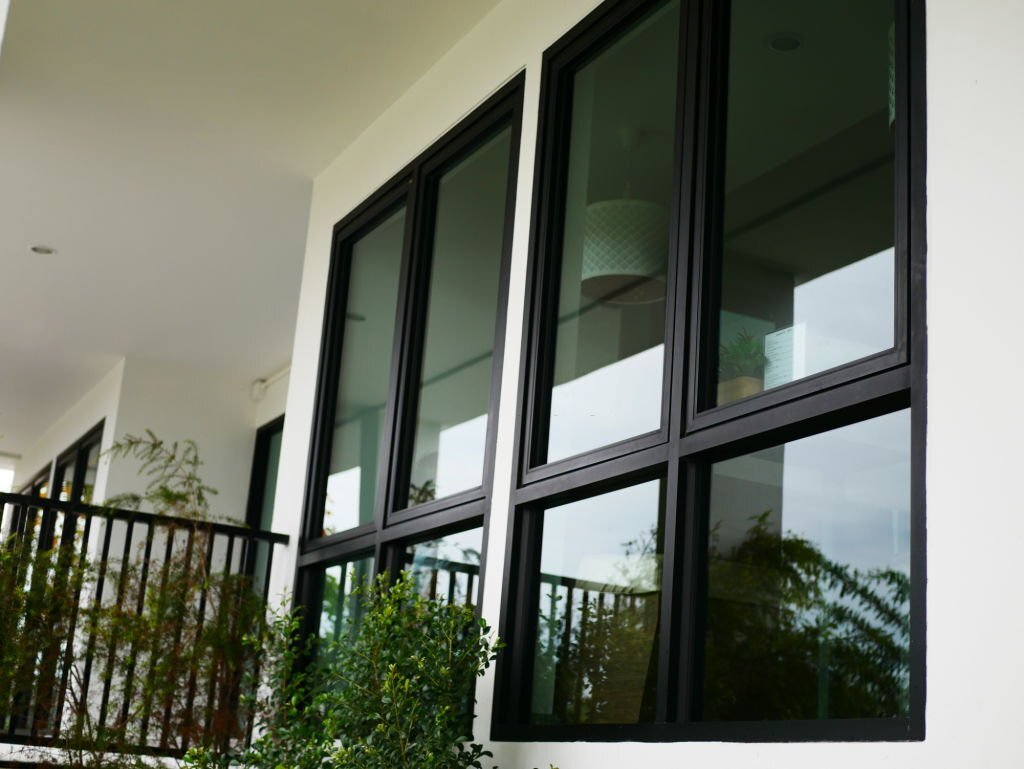How Residential Window Tinting Enhances Your Home's Energy Effectiveness
Residential window tinting offers a compelling option for home owners seeking to enhance power performance within their space. By using specialized films to home windows, it properly minimizes heat transfer, thereby supporting interior temperatures and minimizing the need for extreme home heating or air conditioning. This not just stops power intake yet also provides a more comfy environment by reducing glare. Comprehending the nuances of just how tinting works and picking the proper kind for your home can be pivotal. Oddly, what elements should one think about prior to making this investment?
Comprehending Window Tinting
Comprehending window tinting is important for homeowners looking for to boost both comfort and energy performance in their space. Residential Window Tint. Window tinting entails the application of a thin film to the inside or exterior surface area of glass home windows. This movie can dramatically regulate the quantity of sunshine and heat that goes into a home, hence influencing indoor climate conditions
There are different types of window tinting films available, each with unique properties. The performance of home window tinting is frequently measured by its Visible Light Transmission (VLT) percent, which suggests how much light can pass with the film.
Advantages of Energy Efficiency
Window tinting not only improves looks yet additionally plays a significant function in enhancing energy effectiveness within residential areas. By minimizing warmth transfer via windows, tinted films produce a much more steady indoor environment, which can result in significant decreases in energy intake for heating and cooling. This energy performance translates right into reduced energy bills, providing home owners with substantial long-term cost savings.

Furthermore, home window tinting boosts the comfort of living spaces. By minimizing glow and blocking unsafe UV rays, tinted windows create a more pleasurable environment, which can result in enhanced well-being for owners. The protection versus UV rays likewise aids protect furnishings and floor covering from fading, adding to the durability of house items.
How Tinting Works
Tinting movies run through a mix of sophisticated materials and modern technologies made to manage the quantity of solar power getting in a home. Mainly composed of polyester, these movies commonly incorporate ceramic or metallic bits that mirror and take in heat. This double capability enables them to substantially minimize the infiltration of ultraviolet (UV) rays and infrared radiation while permitting noticeable light to pass through.
The effectiveness of home window tinting is measured by its solar warm gain coefficient (SHGC), which shows just how much solar power is sent through the home window. Reduced SHGC values are more effective as they represent greater warmth being rejected. Furthermore, home window colors can feature a variety of tones, permitting house owners to personalize their aesthetic choices while enhancing find out here power performance.
In addition, these movies act as an obstacle, protecting against warm loss during colder months by reflecting indoor heat back into the home. This thermal insulation effect matches the air conditioning benefits gained during warmer months, adding to a balanced indoor climate year-round. By managing solar energy efficiently, household window tinting not just improves comfort but additionally plays a vital duty in minimizing energy consumption and lowering utility bills.
Choosing the Right Color

There are various kinds of home window movies readily available, look these up consisting of colored, metalized, and ceramic. Dyed films are economical yet may have restricted sturdiness. Metalized movies supply much better warm denial yet can hinder digital signals. Ceramic films supply exceptional heat control without jeopardizing visibility and are very durable, making them a preferred option.
Visible light transmission (VLT) is one more crucial variable, as it shows visit the website the amount of all-natural light that can pass through the colored glass. House owners need to pick a color with a VLT that matches their lights preferences while still supplying appropriate glare reduction.
Additionally, assessing the solar warmth gain coefficient (SHGC) can help determine how well a tint can block warm from sunlight. A reduced SHGC shows better warm control, eventually improving power performance.
Installation and Upkeep Tips
Appropriate setup and upkeep are important components in maximizing the advantages of domestic home window tinting. Experts also utilize specialized methods and tools, which can enhance the resilience and performance of the tint.
Following installation, maintenance is important to lengthen the life of the home window movie. It is recommended to wait at least 30 days prior to cleaning up the colored home windows to allow the glue to heal totally.
In addition, routine evaluations are advantageous. Look for any type of peeling or bubbling, which can indicate incorrect setup or use in time - Residential Window Tint. Addressing these problems promptly can stop further damage and keep energy efficiency. By sticking to these setup and upkeep pointers, home owners can ensure their home window tinting continues to provide considerable power cost savings and convenience for years ahead.
Final Thought
In final thought, residential window tinting functions as an efficient remedy for improving energy efficiency within homes. By decreasing warmth transfer and blocking hazardous UV rays, window films contribute to lower power intake and boosted interior convenience. The choice of proper tinting products, together with appropriate installation and maintenance, additionally makes the most of these benefits. Ultimately, window tinting represents a lasting investment that not just reduces utility expenses but likewise promotes a comfy living environment throughout the year.
Window tinting entails the application of a thin film to the inside or exterior surface area of glass windows. By lowering warm transfer with home windows, tinted movies produce a much more secure interior climate, which can lead to considerable decreases in energy consumption for heating and air conditioning.The effectiveness of home window tinting is determined by its solar warmth gain coefficient (SHGC), which indicates how much solar power is sent with the home window. By managing solar energy effectively, household home window tinting not only boosts comfort but additionally plays a crucial duty in lowering power intake and lowering utility expenses.
By minimizing warm transfer and obstructing unsafe UV rays, home window movies contribute to reduce power consumption and boosted interior convenience.
Comments on “Discover the Long-Term Conveniences of Residential Window Tint for Your Home”